My 100-part, ultra simple Concorde in the iconic British Airways Landor Livery.
My original Air France version here
British Airways version in the Negus Livery here
No aircraft has captured the world’s attention quite like Concorde, and no aircraft since has surpassed its capabilities. Flying regular passenger service between 1973 and 2003, Concorde succeeded in connecting the world like nothing had before. G-BOAC in particular was considered the flagship of the British Airways Concorde fleet, with a registration matching the airline's predecessor, the British Overseas Airways Corporation. This is a 1:1 scale model in dimension, weight, and power, but I had to make some design compromises to keep the part count down.
A note about True Airspeed (TAS) - SimplePlanes lets us see both TAS and Indicated Airspeed (IAS) by clicking on the speed on the instrument display – TAS is the actual speed of the aircraft through the air. At Mach 2.0 and >50,000 feet, Concorde would be flying at an indicated speed of around 400-500 m.p.h., owing to very low air density at high altitudes.
A few tips for flying Concorde: In this model, I set the fuel to about 35 tonnes. This would be equivalent to a training or qualifying flight in Concorde –much lighter than for a typical trans-Atlantic departure.
Takeoff and Climb – Lifting the nose while accelerating through 250 mph (IAS) should take Concorde into the air. A good climb speed would be somewhere between 280 and 350 mph (IAS). After crossing 10,000 feet, lower the nose a bit (perhaps to 10-15 degrees pitch up) and hold the Indicated speed between 300-400 mph. True Airspeed (TAS) will increase considerably with altitude until reaching supersonic flight somewhere between 30 to 40,000 feet. True Airspeeds of 1200 mph and higher are possible between 50 and 60,000 feet, equating to Mach 2.0 or greater.
Landing - Remarkably, Concorde had no flaps, speedbrakes, or spoilers – just a large delta wing optimized to fly across a very wide speed regime. For landing, approach the runway from a few miles out between 250 and 300 mph (IAS) and slow a bit more before touchdown, trying to hold a constant descent rate.
Enjoy!
Specifications
Spotlights
- DJRianGamer2009 1.8 years ago
- B1 1.8 years ago
- WaterFlavouredSpitfires 1.5 years ago
- dabestsock 21 days ago
- MonsNotTheMonster 20 days ago
- XiShi 1.8 years ago
- MomoDesigns 1.2 years ago
- xXLouisPlayzXx 4 months ago
General Characteristics
- Created On Windows
- Wingspan 83.4ft (25.4m)
- Length 202.3ft (61.7m)
- Height 39.5ft (12.0m)
- Empty Weight 173,324lbs (78,618kg)
- Loaded Weight 249,473lbs (113,159kg)
Performance
- Power/Weight Ratio 0.609
- Wing Loading 62.1lbs/ft2 (303.3kg/m2)
- Wing Area 4,015.4ft2 (373.0m2)
- Drag Points 23097
Parts
- Number of Parts 100
- Control Surfaces 8
- Performance Cost 695

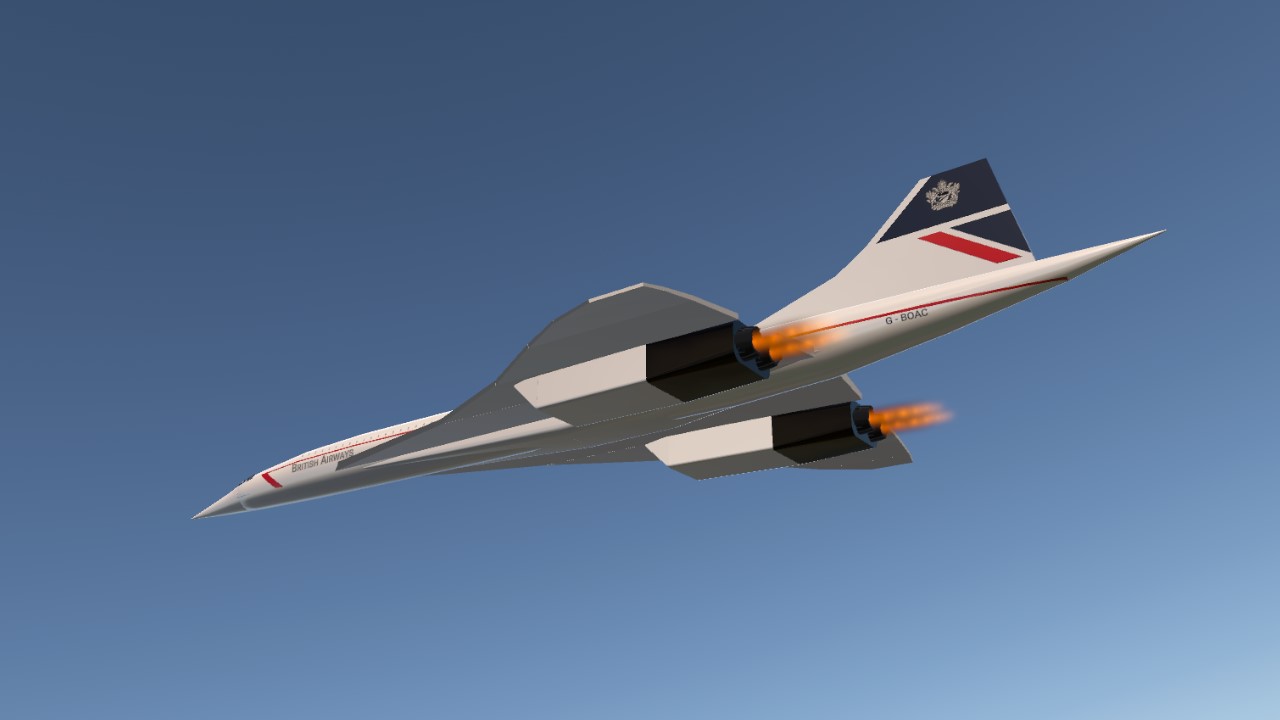
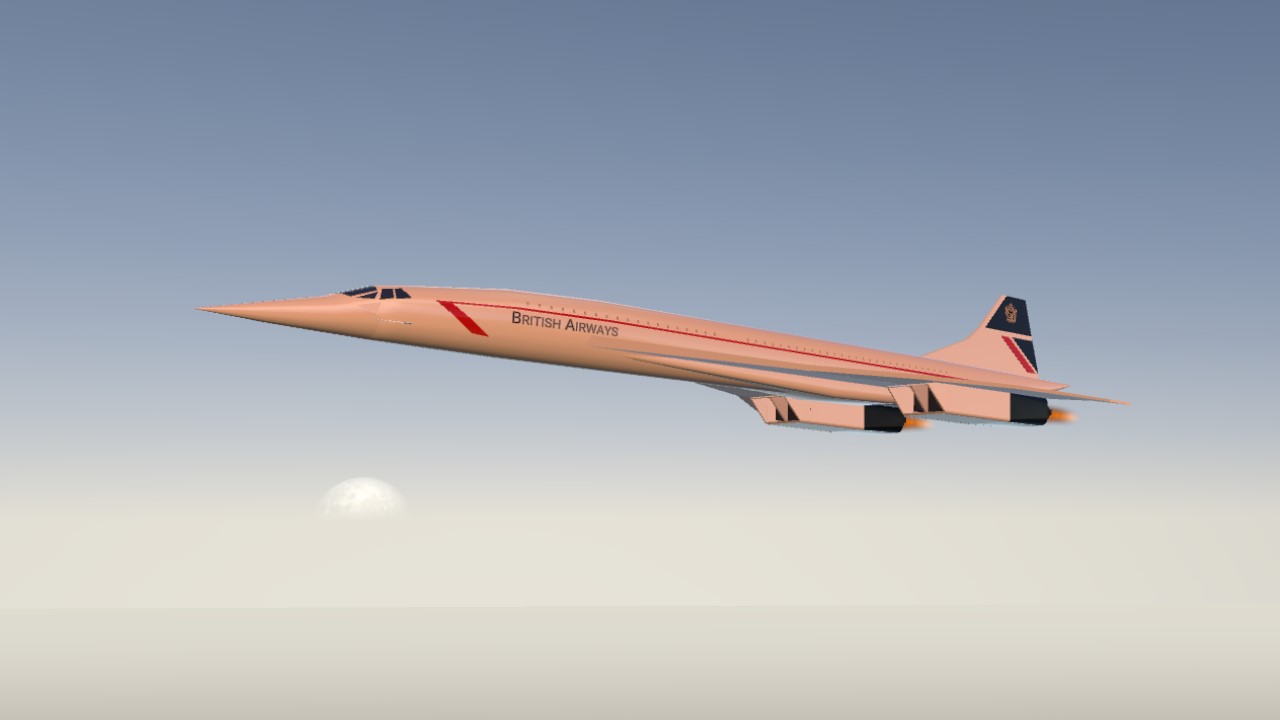
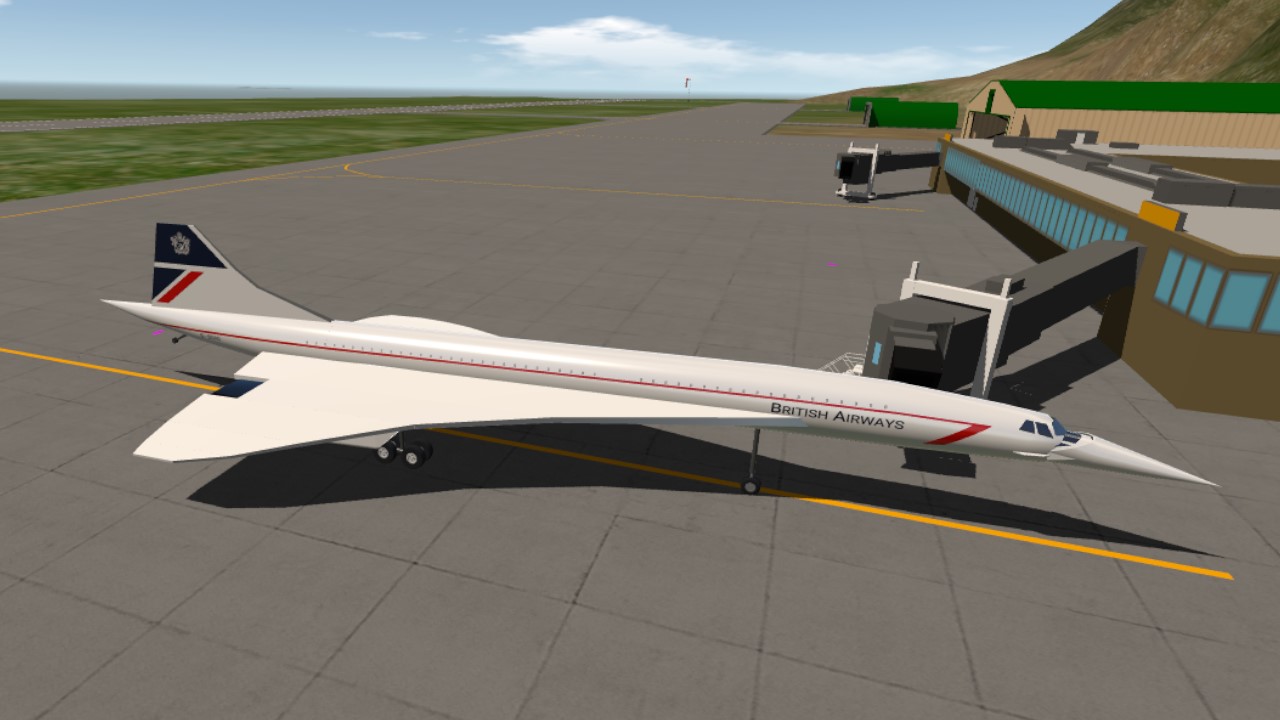
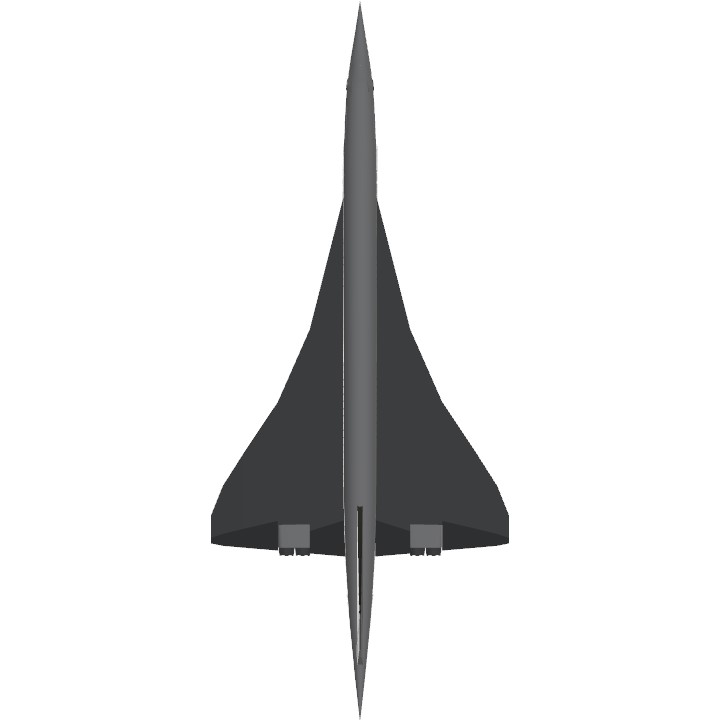
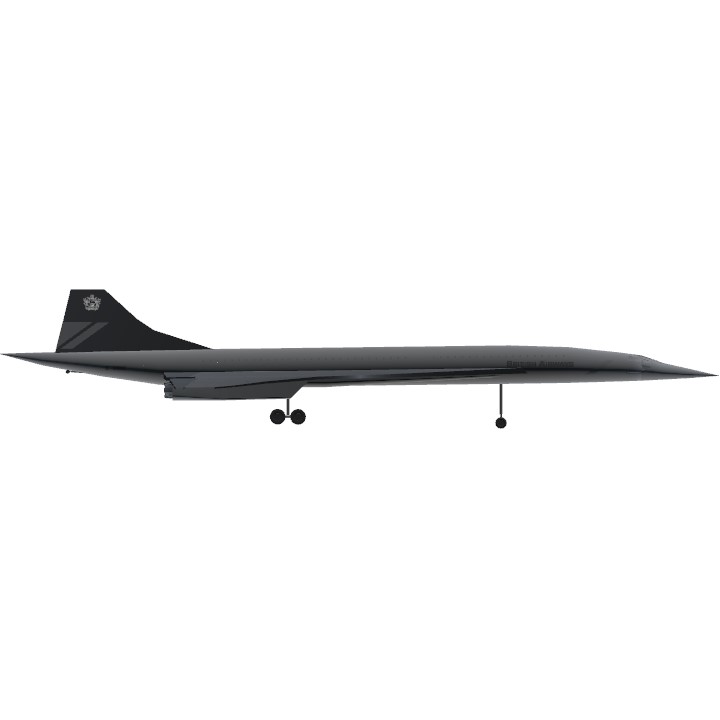
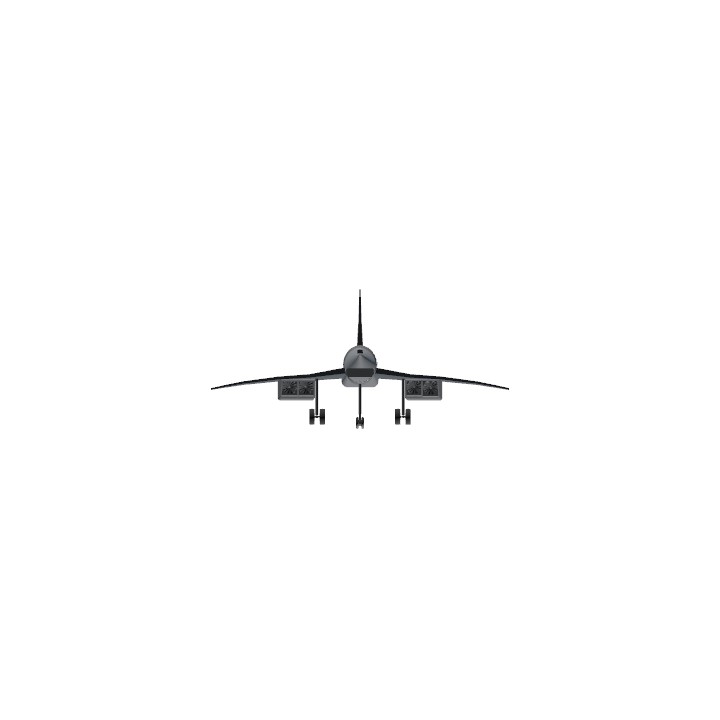
100-parts concorde British Airways!
For 100 parts, this is amazing!!!!
D r o o p s n o o t